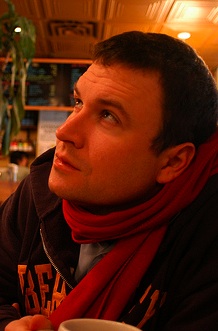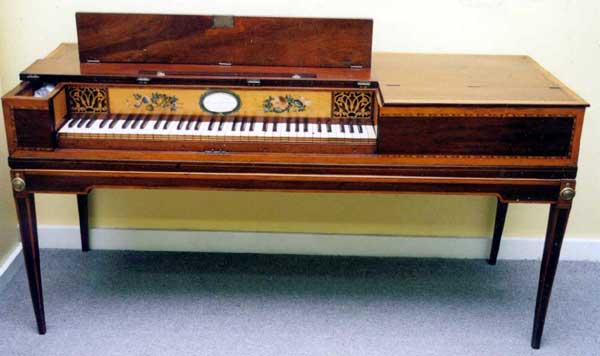- Jun 2018
-
ktakahata.github.io ktakahata.github.iopage 295
-
Naiad
-
Phoebus
-
nymphs
-
spirits
-
host
-
-
ktakahata.github.io ktakahata.github.iopage 253
-
Mr. Maupertuis
-
Amyntor
-
Apollo’s
-
-
ktakahata.github.io ktakahata.github.iopage 241
-
Mantuan Bard
-
-
ktakahata.github.io ktakahata.github.iopage 233
-
Jethro Tull, Esq;
-
Ceres’ son
-
hoe-arm’d gang
-
-
ktakahata.github.io ktakahata.github.iopage 951
-
Ceres
Tags
Annotators
URL
-
-
ktakahata.github.io ktakahata.github.iopage 932
-
mounted trooper
-
Phosphor
Tags
Annotators
URL
-
-
ktakahata.github.io ktakahata.github.iopage 921
-
late-hung coppers
Slaves?
Tags
Annotators
URL
-
-
ktakahata.github.io ktakahata.github.iopage 901
-
Palæmon
Tags
Annotators
URL
-
-
ktakahata.github.io ktakahata.github.iopage 891
-
O M ***
Tags
Annotators
URL
-
-
ktakahata.github.io ktakahata.github.iopage 882
-
St. Christopher
-
Dryads
Tags
Annotators
URL
-
-
ktakahata.github.io ktakahata.github.iopage 812
-
Sir Hans Sloane
-
Eurus
Tags
Annotators
URL
-
-
ktakahata.github.io ktakahata.github.iopage 792
-
Medicean Venus
-
Saturn’s
Tags
Annotators
URL
-
-
ktakahata.github.io ktakahata.github.iopage 782
-
Hymen
-
Percy’s
Tags
Annotators
URL
-
-
ktakahata.github.io ktakahata.github.iopage 767
-
Acasto’s daughter
Acasto and Acasto's daughter
-
Theana
-
Nine
-
Isis
-
Thames
-
Junio’s
-
Theana
Tags
Annotators
URL
-
-
ktakahata.github.io ktakahata.github.iopage 721
-
Theodorus
Tags
Annotators
URL
-
-
ktakahata.github.io ktakahata.github.iopage 181
-
Pomona
-
-
ktakahata.github.io ktakahata.github.iopage 165
-
Charles II.
-
Sir Thomas Warner
-
Q. Anne
-
K. William
-
Medusa
-
-
ktakahata.github.io ktakahata.github.iopage 156
-
the Carlisle-family
-
King Charles II.
-
the Early of Marlborough
-
the Earl of Carlisle
-
Charles I.
-
Chief Nevis
-
-
ktakahata.github.io ktakahata.github.iopage 143
-
Milton
-
Q. Curtius
-
the Prince
-
-
ktakahata.github.io ktakahata.github.iopage 136
-
King Charles
-
Sir Thomas Modyford
-
Oliver Cromwell
-
Sir Anthony Shirley
-
James
-
Iberian King
-
-
ktakahata.github.io ktakahata.github.iopage 122
-
COLUMBUS
-
DAUGHTERS of Heaven
the Muses
-
-
ktakahata.github.io ktakahata.github.iopage 112
-
Pluto
-
Proserpine
-
-
ktakahata.github.io ktakahata.github.iopage 101
-
King James
-
-
ktakahata.github.io ktakahata.github.iopage 94
-
his Majesty
-
Templeman
Thomas Templeman, author of A New Survey of the Globe (c1729)
-
Christopher Columbus
-
Arcadian Pan
-
-
ktakahata.github.io ktakahata.github.iopage 82
-
Sir Hans Sloane
-
Ulloa
-
-
ktakahata.github.io ktakahata.github.iopage 61
-
Chaucer
-
-
ktakahata.github.io ktakahata.github.iopage 52
-
Pedro de Atenca
-
Ferdinand the Catholic
-
-
ktakahata.github.io ktakahata.github.iopage 46
-
Pompey
-
Arrian
-
Pliny
-
Lucan
-
Imperial George
George III
-
Aurelius
George Thomas
-
-
ktakahata.github.io ktakahata.github.iopage 36
-
Sommerville
William Somerville
-
Smart
Christopher Smart
-
Dyer
-
Pomona’s Bard
John Philips
-
Maro
Virgil
-
Th’ Ascrean Poet
Hesiod
-
-
ktakahata.github.io ktakahata.github.ioargument1
-
Christopher Columbus
-
-
ktakahata.github.io ktakahata.github.iopage vi6
-
Dyer
John Dyer (?1700-57), English poet, author of The Fleece (1757)
-
Philips
John Philips (1676-1709), English poet, author of Cyder (1708)
-
Pere Labat
Jean-Baptiste Labat (1663—1738), the author of Nouveau Voyage aux lies de I'Amerique (1722)
-
Colonel Martyn
Colonel Samuel Martin (c. 1690-1776), author of An Essay upon Plantership
-
Virgil
-
Hesiod
-
-
ktakahata.github.io ktakahata.github.iopage 961
-
Pere Labat
-
-
ktakahata.github.io ktakahata.github.iopage 974
-
Helen
-
Thone
-
Polydamna
-
Amphitryte
-
- Mar 2018
-
people.eecs.berkeley.edu people.eecs.berkeley.edu
-
Pieter Abbeel

Tags
Annotators
URL
-
-
en.wikipedia.org en.wikipedia.org
-
Describing the creation of Superorganism's songs, Orono Noguchi says, "It usually starts with us listening to music and talking about music, art, and all kinds of stuff in the kitchen. Then, one of us would come up with a very basic idea for a song. We'd then send the file back and forth among the group and add on some random ideas that we have. We'd keep working on it until we have a final product."[9] "We've got the guy making the videos downstairs, mixing in the other room, [and] singing going on [elsewhere]," Harry says in regards to their live-in studio. "We've created this kind of warped version of a pop production house."[1]
-
-
-
If scientists can be confident of anything, it is that whatever we currently believe about the genetic nature of differences among populations is most likely wrong. For example, my laboratory discovered in 2016, based on our sequencing of ancient human genomes, that “whites” are not derived from a population that existed from time immemorial, as some people believe. Instead, “whites” represent a mixture of four ancient populations that lived 10,000 years ago and were each as different from one another as Europeans and East Asians are today.
I'd like to see that study. This article.
-
-
acberg.com acberg.com
-
Alex Berg

-
-
yalmip.github.io yalmip.github.ioDownload1
-
Johan Löfberg
-
-
homes.cs.washington.edu homes.cs.washington.edu
-
Steven Seitz, homepage at washington

Tags
Annotators
URL
-
-
homes.cs.washington.edu homes.cs.washington.edu
-
Ira Kemelmacher-Shlizerman
Tags
Annotators
URL
-
-
szeliski.org szeliski.org
-
Richard Szeliski

Tags
Annotators
URL
-
-
www.cs.rpi.edu www.cs.rpi.edu
-
David R. Musser

-
-
vision.in.tum.de vision.in.tum.de
-
Dr. Xiang Gao
高翔 SLAM

-
-
arxiv.org arxiv.org
-
Joan Bruna

-
-
statistics.berkeley.edu statistics.berkeley.edu
-
Joan Bruna, new homepage at cims

Tags
Annotators
URL
-
-
petewarden.com petewarden.com
-
Pete Warden
-
-
aip.scitation.org aip.scitation.org
-
Todd Veldhuizen, the co-discoverer of expres-sion templates (CIP 10:6, 1996 p. 552; CJP I 1 :3, 1997, p. 263), i now a graduate student at the Univer-sity of Waterloo.
Todd Veldhuizen 创建Blitz++ 时是滑铁卢大学的一名研究生
Tags
Annotators
URL
-
-
pprc.qmul.ac.uk pprc.qmul.ac.uk
-
Particle Physicist
Tags
Annotators
URL
-
-
ece.uwaterloo.ca ece.uwaterloo.ca
-
Todd Veldhuizen
Blitz++ is a class library for scientific computing designed by Todd Veldhuizen
Tags
Annotators
URL
-
-
www.pyimagesearch.com www.pyimagesearch.com
-
Rybnikov
Object detection with deep learning and OpenCV
the main contributor to the dnn module for making deep learning so accessible from within the OpenCV library.
-
-
petewarden.com petewarden.com
-
Benoit Jacob
founder of Eigen project
-
-
www.cs.princeton.edu www.cs.princeton.edu
-
Robert Sedgewick

-
-
bitbucket.org bitbucket.org
-
Gael Guennebaud
-
-
gavwood.com gavwood.com
-
Gavin Wood

-
-
awards.acm.org awards.acm.org
-
Yu Zheng
郑宇
-
Hubertus Franke
-
Shuicheng Yan
颜水成
-
-
web.cs.ucla.edu web.cs.ucla.edu
-
Jens Palsberg, UCLA

-
-
mclab.eic.hust.edu.cn mclab.eic.hust.edu.cn
-
白翔, 华中科技大学
-
-
faculty.cs.tamu.edu faculty.cs.tamu.edu
-
柴金祥 (MSRA第一篇siggraph的第一作者 现在在TAMU)

-
- Feb 2018
-
www.perseus.tufts.edu www.perseus.tufts.edu
-
Ὑπερβορέους
-
Δαλογενὴς
-
Περσᾶ[ν
No Pleiades URI https://en.wikipedia.org/wiki/Achaemenid_Empire
-
Ἑλλάνων
-
Συρακοσίῳ
-
- Dec 2017
-
www.theguardian.com www.theguardian.com
-
There is a reason we know Malala's story but not that of Noor Aziz, eight years old when killed by a drone strike in Pakistan; Zayda Ali Mohammed Nasser, dead at seven from a drone strike in Yemen; or Abeer Qassim Hamza al Janabi, the 14-year-old girl raped and set on fire by US troops in Mahmudiyah, Iraq. "I wasn't thinking these people were humans," one of the soldiers involved, Steven Green, said of his Iraqi victims.
-
- Nov 2017
-
www.returnofkings.com www.returnofkings.com
-
social media can be an extremely powerful tool that we can exploit to bring back the patriarchy.
media is a tool to control people
-
- Oct 2017
-
194.177.192.82 194.177.192.82
-
υπόψη
body
-
- Sep 2017
-
engagements2017-18.as.virginia.edu engagements2017-18.as.virginia.edu
-
two students only, this provision being deemed advantageous to morals, to order, & to uninterrupted study;
I find it interesting that two is the explicitly stated maximum for students living together in order to be neat, get along well, and have an ideal situation for studying. I believe this still holds true in today's time, though many find themselves going to the library to study instead. This statement causes me to wonder whether it was rare for students to go elsewhere, such as a library, to study at this time. It seems likely that since a University such as this had not existed previously, the founders wanted to give the prospective students the best possible chance to succeed and did not want to force the students to go to a library or some other building to do their studying. Also, the founders were likely trying to get the students accustomed to studying in their living quarters with another person present, to prepare them for their future jobs when they would have wives and maybe children in the same house or room as them while working.
-
- Aug 2017
-
sparcopen.github.io sparcopen.github.io
-
Find a Speaker For Your Open Event
Tags
Annotators
URL
-
-
www.gettingsmart.com www.gettingsmart.com
-
People To Pay Attention To
-
- Jul 2017
-
ufl.instructure.com ufl.instructure.com
-
I want to practice tagging... let's see.
-
- May 2017
-
annotatingausten.sfsuenglishdh.net annotatingausten.sfsuenglishdh.net
-
hardly forty.
Fanny Dashwood seems to be suggesting that age forty is still young and that Mrs. Dashwood will live for several more years, thus earning more payments from the annuity. According to data gathered by Max Roser, the average lifespan for women in 19th Century England was about 45-50 years. https://ourworldindata.org/life-expectancy/
-
-
nfnh2017.scholar.bucknell.edu nfnh2017.scholar.bucknell.edu
-
The native peoples and their land were, and to some extent continue to be, under siege.
Here Berger is making a reference to the history of Indigenous peoples in Canada and how they have been affected through the degradation of nature around them. The history of white people bringing disease and other hardships to indigenous people is a well documented one. But the less talked about part is how modern technologies affect on the environment has affected them. Andrew Stuhl writes, "the number of reindeer in Barrow- the largest town in the region with a population of 1,200 Inuit- had dropped from an estimated 35,000 in 1935 to 5,000 in 1940." This dramatic decrease in reindeer population had a lasting effect on the Inuit population as they eventually had to negotiate with the Canadian government to get reindeer herds as a means of subsistence. As technology advanced, over fishing and whaling practices in the 1980s and 1990s drove some species of fish to near extirpation from the Arctic. Furthermore climate change is having a profound effect on indigenous populations in the more recent past. The raise of temperature is creating less sea ice and making the migrating patterns of whales and caribou less predictable. This causes it to be more difficult for Inuit hunters to track and capture their food. All of these things put together shows how white people's affect on the environment has made life harder for the indigenous populations of the Arctic. Ford, James D.1, james.ford@mcgill.ca. "Indigenous Health and Climate Change." American Journal Of Public Health 102, no. 7 (July 2012): 1260-1266. Social Sciences Full Text (H.W. Wilson), EBSCOhost (accessed May 8, 2017). Stuhl, Andrew. Unfreezing the Arctic science, colonialism, and the transformation of Inuit lands. Chicago: The University of Chicago Press, 2016.
-
National Parks Act
In this section, Berger talks about how he believes that there should be an amendment to allow for the creation of wilderness parks. The Berger Inquiry was first published in 1977 and by "1988 amendments also enabled the Governor in Council to give legal recognition to wilderness zones within parks, heightening the level of protection on these lands by prohibiting any activities that are 'likely to impair the wilderness character of the area." The National Parks Act has been an evolving document and has changed throughout its history. The first national park in Canada was established in 1885 which was Banff National Park but the National Parks Act was not passed until 1930. This act allowed for Canadian Parliament to create designated areas as national parks where industrial development and activities like hunting would be restricted. As of 2000 there was over 68,327,742 hectares of land designated as a national parks which is about 6.84 of the land in Canada. While this is a good percentage, there has been a push to add more national parks in different areas of the country. There was a proposal to add over 15,000 square kilometers and establish five new regions to the national marine conservation areas. In general, Canadians care about their national parks and "this significance has been reflected in the additions to the amount of area protected and changes to legislation and policy over the last decade." Dearden, Philip, and Jessica Dempsey. "Protected areas in Canada: decade of change." Canadian Geographer 48, no. 2 (July 20, 2004): 225-239. Social Sciences Full Text (H.W. Wilson), EBSCOhost (accessed May 8, 2017).
-
Sigurd F. Olson
Sigurd Olson was a writer in the 20th century who focused on nature and how humans interact with nature. Olson grew up in Minnesota and lived there most of his life where he found his love of nature by traveling to different parts of the state. Olson played a big role in drafting the Wilderness Act of 1964 passed. He was responsible for establishing a few national parks including Voyageurs National Park in northern Minnesota, Alaska's Arctic National Wildlife Refuge, and Point Reyes National Seashore in California. Olson also held the position of President of the Wilderness Society and National Parks Association at different times in his life. With all of the work he did, Olson was a well known figure in the conservationist and environmentalist field. Olson wrote many books about the wilderness of different places he traveled and many of them focused on places in the northern states of the US. Olson had a simplistic view of nature as he felt "the wilderness offers simplicity and brings people closer to nature. It is also a place where a person can find a renewed sense of identity." Olson's legacy is continued by his preservation work and the many places he was able to establish wilderness protection laws. In 1978 Olson was able to get full wilderness status granted to the Boundary Waters Canoe Area which was the area he grew up near.
"Sigurd Olson, a Writer And Environmentalist." The New York Times. January 14, 1982. Accessed May 07, 2017. http://www.nytimes.com/1982/01/15/obituaries/sigurd-olson-a-writer-and-environmentalist.html. Nelson, Michael. "Wilderness." In Encyclopedia of Environmental Ethics and Philosophy, edited by J. Callicott and Robert Frodeman, 402-405. Vol. 2. Detroit: Macmillan Reference USA, 2009. Global Reference on the Environment, Energy, and Natural Resources (accessed May 7, 2017).

-
Wallace Stegner
Wallace Stegner in an American author, environmentalist, and historian who grew up in the western part of the country where most of his writing was focused. He wrote about his life moving around the western states and growing up with nature having an important role in his life. Berger is quoting from Stegner's Wilderness Letter that he wrote in 1960. This quote is a good reflection of what Stegner's message was. Even though Stegner was a writer, he was an avid conservationist that was vocal with his beliefs. Once place Stegner lived was in Salt Lake City, Utah. He attended the University of Utah there and received his B.A. in 1930. Stegner continued his academics at the University of Iowa where he got his doctorate in 1935. Stegner went on to write Pulitzer Prize winning Angel of Repose in 1971 and National Book award winning the The Spectator Bird in 1976. Stegner's legacy as a writer and a conservationist can be seen throughout the places he lived. At the University of Utah the Wallace Stegner Prize in Environmental or American Western History was established in 2010. This award shows the lasting impact of Stegner's life on the subject. Stegner writes "Something will have gone out of us as a people if we ever let the remaining wilderness be destroyed." Stegner is one of the fathers of the conservation effort of the wilderness in the United States and it is appropriate that Berger quotes him here. Stegner, Wallace. "Earth words." Mother Earth News, August-September 2004, 128. Global Reference on the Environment, Energy, and Natural Resources (accessed May 6, 2017). http://find.galegroup.com/grnr/infomark.do?&source=gale&idigest=6f8f4a3faafd67e66fa023866730b0a1&prodId=GRNR&userGroupName=bucknell_it&tabID=T003&docId=A119782042&type=retrieve&PDFRange=%5B%5D&contentSet=IAC-Documents&version=1.0.

-
Alexis de Tocqueville
Alexis de Tocqueville is a French politician and historian that is best known for his work, "Democracy in America". Tocqueville wrote this piece with two volumes in 1835 and 1840 after visiting the United States. He traveled around the country making observations on American society compared to his European standard. His work focused on the many aspects of US government and policy ranging from manifest destiny to slavery. A major part of de Tocqueville's work was his study of the different races and how they interact. He drew the picture of America "where three typical characters predominate: the black who suffer in slavery, the Indian who is free in idleness, and the white American who is at work and at work. Profit." Tocqueville focused on other parts of American society as well that Berger references at this part. Here, Berger is quoting a section about how American's drive for expansion led to the destruction of the environment which. Tocqueville was a revolutionary with this observation as he was one of the first people to document the devastation that industrialization can bring to the natural world. Over the next decades this idea would be adopted by many including Theodore Roosevelt and lead to the creation of National Parks across the United States. Berger is using this quote because this idea is still extremely prevalent in the conservation effort today. Berger concedes that expansion of technology and industrialization is inevitable but that sometimes the cost of this advancements is not worth the punishment to the environment. Tocqueville's observations are still major issue in developing countries where massive industrialization is just beginning.
Denys Delâge and Catherine Desbarats and Jean-Philippe Warren. "Alexis de Tocqueville in" wild "country." The Tocqueville Review / La revue Tocqueville 36, no. 2 (2015): 175-204. Https://muse.jhu.edu/ (accessed April 17, 2017).
-
-
annotatingausten.sfsuenglishdh.net annotatingausten.sfsuenglishdh.net
-
Marianne was discovered to be musical, she was invited to play. The instrument was unlocked, every body prepared to be charmed, and Marianne, who sang very well, at their request went through the chief of the songs which Lady Middleton had brought into the family on her marriage, and which perhaps had lain ever since in the same position on the pianoforte; for her ladyship had celebrated that event by giving up music
The comparison between Marianne showing her talents in music and displaying her abilities, and Lady Middleton, who used to play piano before marriage, depicts the importance of “female accomplishments” during this time. Women were to attain certain achievements (drawing, playing music, etc.) to appeal to their male suitors (Hughes, "Gender Roles in the 19th Century,"British Library).

-
His appearance, however, was not unpleasing, in spite of his being in the opinion of Marianne and Margaret an absolute old bachelor, for he was on the wrong side of five-and-thirty;
This scene shows Marianne and Margaret's critical views on the physical appearance and age of eligible bachelors. Despite the girls' opinions of Colonel Brandon as an unattractive bachelor, his age as an eligible companion was not uncommon during this period due to his stature in society. According to Shoemaker, "In general, the gap in marriage ages increased higher up the social scale. There was a five-year gap among the London middle-class in the early eighteenth century, which extended to as much as ten [years] among the wealthiest groups, such as merchants, the gentry, and the aristocracy" (Shoemaker, Gender in English Society 1650-1850, 92).
-
-
annotatingausten.sfsuenglishdh.net annotatingausten.sfsuenglishdh.net
-
him
Refers to William Gilpin who is believed to have first introduced the idea of the aesthetic ideal of the picturesque, first in 1768 in his book Essays on Prints and then later expanded his idea in his travel book Observations on the River Wye, and Several Parts of South Wales, etc. Relative Chiefly to Picturesque Beauty; made in the Summer of the Year 1770.(Oxford Dictionary of National Biography)

-
Shakespeare
“William Shakespeare (1564-1616) wrote Hamlet c. 1599-1601. In Austen’s time, Hamlet was a well-known play.”
-
- Apr 2017
-
annotatingausten.sfsuenglishdh.net annotatingausten.sfsuenglishdh.net
-
canvassing against the election
Mr. Palmer is campaigning around the country for a seat in Parliament's House of Commons. Mr. Palmer is most likely campaigning for a seat as a representative for specific boroughs (Thorne, "IV. The Changing Face of the House and Political Parties," The History of Parliament: the House of Commons 1790-1820, (1986)).
-
but she knew that this kind of blunder was too common for any sensible man to be lastingly hurt by it
Elizabeth Lanfear describes the repercussions of marriage and the commonality of how marriages occur: “marriage, generally speaking, in either sex, is more frequently the result of accident than of selection : propinquity, convenience, interest, or, at best, mere fancy, dignified by the name of love, forms the basis, of most matrimonial engagements” (Lanfear, Young Ladies on their Entrance into the World, p. 47). Lanfear's statement on marriage relates to this moment where Elinor notes her knowledge of this common type of marriage. In relation to Lanfear's statement, Elinor notices the infatuation between Mr. Palmer and his wife being the main attraction that led to their marriage.
-
frank
"To superscribe (a letter, etc.) with a signature, so as to ensure its being sent without charge" (OED). According to The History of the British Post Office, franking was a privilege that allowed sending letters without being charged. However, over time, this privilege was highly abused and ultimately by 1840 this privilege was finally abolished. Franking free letters for others not in Parliament and for non Parliament purposes was so serious a Franking Department was created to inspect such letter (Hemmeon, The History of the British Post Office, p. 57).
-
drove about town in very knowing gigs
A gig is "a light two-wheeled one-horse carriage" (OED). Austen is saying these gigs are very fashionable and flashy. These carriages relate lawyers to the association of wealth. Aoife Byrne states that "gigs in Austen's works highlight their owner's social aspirations, and they illustrate contextual attitudes to those aspirations" (Byrne, "'Very Knowing Gigs': Social Aspiration and the Gig Carriage in Jane Austen's Works," Persuasions: The Jane Austen Journal, vol. 37 (2015)).
 . For the lawyers that "drove about" in these carriages, Austen is suggesting the connection of carriages relating lawyers to wealth and fashion.
. For the lawyers that "drove about" in these carriages, Austen is suggesting the connection of carriages relating lawyers to wealth and fashion.
-
-
annotatingausten.sfsuenglishdh.net annotatingausten.sfsuenglishdh.net
-
Cowper
William Cowper, (born November 26, 1731, Great Berkhamstead, Hertfordshire, England—died April 25, 1800, East Dereham, Norfolk), one of the most widely read English poets of his day."(https://www.britannica.com/biography/William-Cowper). "Marianne, in Sense and Sensibility, complains about the way Edward Ferrars reads Cowper aloud...Cowper's mediative poetry celebrated the beauty of nature. He is often considered an early Romantic poet, and as such would particularly appeal to Marianne"(Patrice Hannon, 101 Things You Didn't Know About Jane Austen: The Truth About the World's Most Intriguing Romantic Literary Heroine, p. 96).

-
-
nfnh2017.scholar.bucknell.edu nfnh2017.scholar.bucknell.edu
-
The buffalo herds, estimated to number about 75 million, were reduced in only a few decades to a few hundred survivors
American buffalo also known as bison were at one point the thought to be the most abundant mammal living in North America. They have been reported to grow up to 6 feet tall and weigh over 2000 pounds. Buffalo, in the wild, are indigenous to the Great Plains region of North America but lived all throughout the continent all the way into Canada and Alaska. This massive animals played an essential role in for many Native American populations throughout history. In the 19th centuries mass hunting of these animals began with the use of horses and rifles. Before this hunting it was reported that one would be able to see entire parries filled with millions of these animals. Over the course of the century, reckless hunting of bison led to a massive collapse of their population. There was many different reasons for their hunting ranging from sport hunting, to killing them to hurt the Native American populations that heavily relied upon them. The American Buffalo has become a symbol of conservation and there has been an ongoing effort to try and rebuild their populations. Recently they were named as the official mammal of the United States as "the bison is North Americas largest land animal the embodiment of American strength, resilience and the nations pioneer spirit.” Many national parks including Yellowstone have protected bison populations that have been steadily growing over the last decades.
"American bison designated national mammal of U.S." St Louis Post-Dispatch [MO], November 24, 2016, A17. Global Reference on the Environment, Energy, and Natural Resources (accessed April 10, 2017). http://find.galegroup.com/grnr/infomark.do?&source=gale&idigest=6f8f4a3faafd67e66fa023866730b0a1&prodId=GRNR&userGroupName=bucknell_it&tabID=T004&docId=CJ471488256&type=retrieve&PDFRange=%5B%5D&contentSet=IAC-Documents&version=1.0..

-
- Mar 2017
-
tachesdesens.blogspot.com tachesdesens.blogspot.com
-
I arrived in class to find our partner librarians ready to teach our students.
Colleagues. connection. mutualisation.
-
-
tachesdesens.blogspot.com tachesdesens.blogspot.com
-
One minute left. Terry, Keith, Kevin, Susan, Maha, Mia, Jim, Maritta, Marcin, Paul, Teresa, Maxime, Alexis, Camille, Clarissa, Blaise, Leena, Jurgen, Jose, Alan, Howard, Alec, Laura, Christine, Marie Christine, Dave, Bonnie et al -
time people connection
-
-
tachesdesens.blogspot.com tachesdesens.blogspot.com
-
Rounders, the ball comes my way, I give it a big wallop and then run round, sort of.
Responsibilty to be a witness to my context.
-
-
nfnh2017.scholar.bucknell.edu nfnh2017.scholar.bucknell.edu
-
Metis
The Metis are a group of aboriginal people in Canada who trace their descendants back to the First Nations and European settlers. In the early part of European expansion into Canada the Metis were a tribe of aboriginal people that lived in the North Western part of Canada. The Metis people today are an interesting group because most of them are not direct result of intermarriage between European and First Nations people. The Metis primarily live in the Western Part of Canada and today there are about 500,000 people considered part of the Metis community. They represent about a third of the aboriginal people in Canada today. However, because of assimilation of Metis into European Canadian populations, many people can trace their ancestry back to some aboriginal past. Much of this interaction occurred in the mid 20th century with the fur trade as many European Canadians interacted with Metis tribes. Because of this, today it is hard to define someone who has a clear legal or moral ability to call themselves Metis because of the extensive assimilation into the Euro-Canadian culture. Unfortunately, "a universal consequence of the meetings of people is the rise of a mixed population whose social status is ambiguous..." This is partially true for the Metis today because there it is hard for the Canadian government to discern what people are Metis. When Berger refers to the Metis in this report he is most likely talking about a tribe of aboriginal people who identify themselves as Metis.
Berry, B. (1968), GENERAL AND ETHNOLOGY: Metis of the Mackenzie District. Richard Slobodin. American Anthropologist, 70: 373–374. doi:10.1525/aa.1968.70.2.02a00330
-
Now they recognize they are not essential
In the late 1800s and early 1900s northern explorers depended on the indigenous people. The natives knew the land, the climate, and the wildlife. Because of their knowledge, the indigenous northerners served as local guides in this harsh and uninviting place. The native people also served as interpreters for researchers and were a lifeline for those that had little-to-no knowledge of how to survive in that kind of environment. However, they were not always seen as important figures. As southern technologies became more and more prominent in the far north, native peoples were pushed aside. “The airplane and helicopter strained relations among researchers and northerners. These technologies relieved field-workers from establishing extensive and regular relationships with locals as guides, interpreters, and informants. Permafrost scientists in particular could produce knowledge about the Arctic environment without Inuit expertise and apply that research in governmental construction projects without consulting locals” (108). The Inuits began to view the government scientists as pests, “they arrived in summer ‘in lusty swarm’ and were just as annoying” (108). Many researchers come during the warm months and gather information that allows them to cut ties to the indigenous people. The use of modern technology in the north forces Inuit to work menial jobs and completely change their way of life in order to survive in the modernizing landscape. While the industrial system has brought many valuable things to them, the Inuit are no longer needed or heard. If it is in the best interest of the oil industry, a pipeline would be built right over their homeland, even if they are still on it.
Annotation drawn form Stuhl, Andrew. Unfreezing the Arctic: Science, Colonialism, and the Transformation of Inuit Lands. Chicago: The University of Chicago Press, 2016.
-
The native people have had some hard things to say about the government, about the oil and gas industry and about the white man and his institutions.
It is no secret that there was a lot of tension between the oil and gas company and the indigenous people of Canada and Alaska. In the 1950's and 1960's there was extensive drilling in areas of Alaska and Canada. Almost all of these decisions were made without consulting with the native people living in these areas. The drilling and exploration of the oil and gas fields had severe impacts on the ecosystem in the region. These impacts included the destruction of habitats from marine and terrestrial wildlife. This created many problems for the Native people who relied on hunting and fishing for a living. The Native people felt slighted by the actions of the oil and gas companies who refused to recognize their claims to the areas. Much of this problem was related to the fact that the Canadian and American governments also did not recognize them as people with claims to the land. The "Inuit in Canada faced a federal government that developed some powers-- in this case, to the territorial rather than the state government-- but nevertheless disregarded Aboriginal rights in the pursuit of Northern development." This stance from the government without a doubt led to the same dismissive attitude from the big oil and gas companies. Eventually, in the 1960's the native groups began to take steps in getting themselves recognized by the government and oil industry. It was through the help of environmental agencies that the native people started to be known. Many environmental agencies made it clear that activities in the Arctic such as oil drilling is extremely detrimental to the ecosystem and that it should not be continued. Many native groups piggy-backed on this stance and made themselves heard on the topic. Through this act both the oil industry and government began to recognize them as a legitimate body.
Stuhl, Andrew. Unfreezing the Arctic. Chicago, IL: The University of Chicago Press, 2016.
-
- Feb 2017
-
clalliance.org clalliance.org
-
s, and characters from the fictional story world, in ways that powerfully resonate with fans of the series. Participants are mobilized as “Dumbledore’s Army of the real world” in campaigns such as Not In Harry’s Name which pressures Warner Brothers into using Fair Trade chocolate for its Harry Potter Chocolates.
Fair trade chocolate is a topic that i recently learned about after a long discussion with my sister. It essentially is a Standerd that certifies that the chocolate is not made from plantations that make children and work under unfair conditions and wages.Its amazing how they were able to stand up to cooperates to a issue that most people are not even aware of, Great Work
-
- Nov 2016
-
hypothes.is hypothes.is
-
United Kingdom Census had estimated in the year 2001 that more than 15000 people were Russian-born and were residents in the UK. It is very obvious that 15000 is not a small number. Another obvious fact is that this number might have increased in the past several years. Well, this number has increased a lot. It had been estimated in the year 2014 that more than 150,000 Russian people were the residents in London.http://blog.selectmytutor.co.uk/the-future-of-russian-language-in-the-united-kingdom/
Tags
Annotators
URL
-
- Sep 2016
-
online.salempress.com.lacademy.idm.oclc.org online.salempress.com.lacademy.idm.oclc.org
-
Salvadorans generally wear dark colors and dress conservatively. Timeliness is important, and it is typically considered rude and disrespectful to be late in formal or business situations, especially for a first meeting.
this is interesting because Americans are very similar to people who live in El Salvador, there are a lot of similarities.
-
-
www.nytimes.com www.nytimes.com
-
census categorizes people by race, which typically refers to a set of common physical traits.
Census categorize people by race
-
-
lawrenceacademy-my.sharepoint.com lawrenceacademy-my.sharepoint.com
-
In order to discover the hidden principles of another way of life, the researcher must become a student
To discover hidden views one must become a student while local people from the area you are studying becomes the teacher, the ethnographer tries to learn about how certain things identified the people
-
- Aug 2016
-
medium.com medium.com
-
Shawn and Cory and Tom are three of my best friends in the universe, they know me better than I know myself, and I met them online, thirteen years ago, on an Animal Crossing message board. Like, what the fuck is that? That’s beautiful.
-
- Jul 2016
-
hybridpedagogy.org hybridpedagogy.org
-
Like Martha
-
-
www.youthvoices.live www.youthvoices.live
-
The justice system can be very cruel when it comes to race to
people is all the time being racist
-
- Jun 2016
-
www.esquire.com www.esquire.com
-
Title: LGBT and Black Lives Matter – What About Gay Rights for People of Color?
Keywords: black youth, lgbt people
Summary: The Court's Obergefell v. Hodges decision wouldn't be handed down for nearly two months; on this day, the justices were hearing the case.<br>The plaintiffs were attempting to establish the right of same-sex couples to marry in Kentucky, Michigan, Tennessee and Ohio; the marriage-equality activists who surrounded me were hoping the justices would use the Fourteenth Amendment's Equal Protection Clause not to just affirm a right to marriage in all fifty states but also to create a federal precedent under which any number of other rights for LGBT people might be argued for in the future.<br>This was stage-managed political theater, and the Human Rights Campaign, the LGBT-rights advocacy group, was its director.<br>Gay Men's Chorus belted out the Civil Rights-era protest song "We Shall Overcome."<br>The caucasity of the crowd couldn't be ignored.<br>That unseemly co-optation festered in my mind as I drove forty miles up I-95 to a city on fire.<br>Gray had been allegedly illegally arrested—even State's Attorney Marilyn Mosby later stated so—before he was shackled, thrown in the back of a van without being strapped in, and given a "rough ride" that is believed to have severed his spine.<br>Baltimore had quickly emerged as the new ground zero for the burgeoning Black Lives Matter movement, but the threat of ongoing violence was getting all the news.<br>As day faded into night, the nation wondered if more fires and mayhem would come.<br>Then something unexpected happened, something amazing: Black youth took control and started dancing.<br>They defiantly asserted themselves.<br>No tear gas stung our eyes.<br>These young people stared down the threat of police brutality and defiantly asserted themselves: 'We, by voguing, claim this space as our own.'<br>
-
- May 2016
-
annotatingausten.sfsuenglishdh.net annotatingausten.sfsuenglishdh.net
-
Caractacus
A king of ancient Britons during the Iron Age who ruled from 43-50 AD, his successful attempts at expansion are believed to be the catalyst for the Roman invasion of Britain (Hill).
-
Alfred the Great
Alfred the Great was king of the southern Anglo-Saxon kingdom of Wessex and was known for social and educational reforms as well as military success. He is also the only English monarch known as "the Great" ("Alfred the Great").
-
Agricola
Agricola was a Roman statesman and soldier that governed over Britain and conquered large areas of northern England, Scotland, and Wales ("Agricola").
-
-
annotatingausten.sfsuenglishdh.net annotatingausten.sfsuenglishdh.net
-
Catherine then ran directly upstairs, and watched Miss Thorpe’s progress down the street from the drawing–room window; admired the graceful spirit of her walk, the fashionable air of her figure and dress; and felt grateful, as well she might, for the chance which had procured her such a friend.
Here Austen is having Catherine admiring Isabella because of her charm that she possesses to her move up in society. She can see here how Isabella uses her appearance to win over people not to mention her manners. It brings up the thought of why there were so many balls during this time period. What was expected of women? The balls that Austen describes seem to be more like debutante ball. A Debutante ball is when younger women are brought into society so they can meet eligible men to marry but also be seen as ladies.
-
She liked him the better for being a clergyman, “for she must confess herself very partial to the profession”; and something like a sigh escaped her as she said it.
What is a clergyman? Jane Austen draws from her personal life in her novels pulling in her father’s job position. Clergyman in her novels a lot because it draws from her childhood of her father being one. Not only in Northanger Abby but also in Mansfield park its mentioned men to become clergymen. What is so significant to become of this position? According to Merriam-Webster a clergyman is defined as “a man who is a member of the clergy especially in a Christian church”. Breaking this down even more what does the word clergy mean? It means to be ordained in the church. The clergyman seems to be appear to be a minster who is a socialite among the wealthy. They would perform religious ceremonies in the Christian Church only but also were invited to socialize with the upper class at times.
Work Cited Miriam Webster.Com
-
- Jan 2016
-
umich.instructure.com umich.instructure.com
-
I also know her from Open.
Tags
Annotators
URL
-
- Oct 2015
-
cityheiress.sfsuenglishdh.net cityheiress.sfsuenglishdh.net
-
Henry Earl of Arundel, and Lord Mowbray.
This is in fact one person: Henry Howard, 6th Duke of Norfolk and 17th Baron of Mowbray (1628-1684). He was the second son of Henry Howard, 22nd Earl of Arundel (a title now united with Norfolk). He had married his mistress, Jane Bickerton, in 1676 or 1677, thus alienating most of his family. He was also Catholic, and a victim of the Popish Plot, but had returned to England in the early 1680s to restart his political career. Behn celebrates him for his--and his family's--Royalist loyalties.
Portrait by John Michael Wright (date unknown), Barnsley Museum

Tags
Annotators
URL
-
- Jun 2015
-
caseyboyle.net caseyboyle.net
-
The snail's vein was removed, mixed with salt, and boiled until most of the flesh had been deposited. Varying the mixtures and boiling times produced different shades of colour.
-
- May 2015
-
hypothes.is hypothes.is
-
cars.
-
